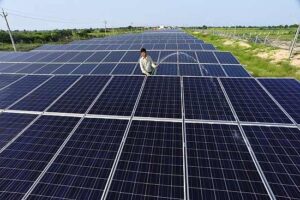Prepaid Solar
One of the biggest problems in the growth of solar energy is the capital cost which accounts for almost 90% of the total lifetime cost of solar energy. Even small scale solar energy systems which can power a couple of lights with energy storage are out of the reach of poor customers in places like India and Africa. These people cannot afford the $200-$500 for such systems, though they spend a greater amount on alternative forms of energy such as kerosene.
Converting these customers towards solar energy makes a huge amount of sense both from a commercial and an environmental point of view. It’s a win-win for the customer, the financing agency as well as the government. There are a lot of social enterprises that are providing financing and products to the bottom of the pyramid customers in India and Africa. We have already featured D.Light as one of the first firms to provide quality products by partnering with SHGs. Now telecom providers in Kenya and Uganda are also starting to provide such services.
Read more about Efficient Solar Products here.
Note prepaid telecom services have been a huge hit in these countries and have allowed telecom penetration to jump exponentially even amongst the poorest customers who make $2 a day. Now the same telecom companies are using their expertise and distribution networks to target their own customers using the prepaid solar schemes. Many areas in the Third World do not have access to the power grid and use primitive fuels for energy. Solar energy is a boon for these people as it does not require a grid. The solar systems are sold for a small payment, while the rest of the cost is amortized over a longer duration. This benefits the customers, as he/she does not have to use expensive kerosene and helps the environment as well. While companies such as Solarcity (SCTY) and Sunrun are doing this for middle class and upper class customers in the USA, these companies are making a huge difference to the poorest of the poor.





